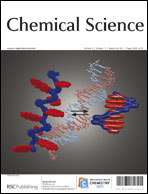We report a combined experimental and theoretical investigation of [XAuCN]− (X = F, Cl, Br, I) to examine the chemical bonding in the mixed cyanide halide Au(I) complexes. Photoelectron spectra are obtained for [XAuCN]−, yielding electron affinities of 5.38 ± 0.05, 5.14 ± 0.05, and 4.75 ± 0.05 eV for XAuCN (X = Cl, Br, I), respectively. Relativistic quantum chemical calculations based on wavefunction theory and density functional theory are carried out to help interpret the photoelectron spectra and elucidate the electronic structures and chemical bonding in the [XAuCN]− complexes. Spin–orbit coupling is found to be important in all the complexes, quenching the Renner–Teller distortion in the neutral molecules. Ab initio calculations including spin–orbit effects allow quantitative assignments of the observed photoelectron spectra. A variety of chemical bonding analyses based on the charge population, bond orders, and electron localization functions have been carried out, revealing a gradual transition from ionic behavior between F–Au in [FAuCN]− to relatively strong covalent bonding between I–Au in [IAuCN]−. Both relativistic effects and electron correlations are shown to enhance the covalency in the gold iodide complex.
![Graphical abstract: The mixed cyanide halide Au(i) complexes, [XAuCN]− (X = F, Cl, Br, and I): evolution from ionic to covalent bonding](/en/Image/Get?imageInfo.ImageType=GA&imageInfo.ImageIdentifier.ManuscriptID=C1SC00487E&imageInfo.ImageIdentifier.Year=2011)
You have access to this article
 Please wait while we load your content...
Something went wrong. Try again?
Please wait while we load your content...
Something went wrong. Try again?
![Graphical abstract: The mixed cyanide halide Au(i) complexes, [XAuCN]− (X = F, Cl, Br, and I): evolution from ionic to covalent bonding](/en/Image/Get?imageInfo.ImageType=GA&imageInfo.ImageIdentifier.ManuscriptID=C1SC00487E&imageInfo.ImageIdentifier.Year=2011)

 Please wait while we load your content...
Please wait while we load your content...